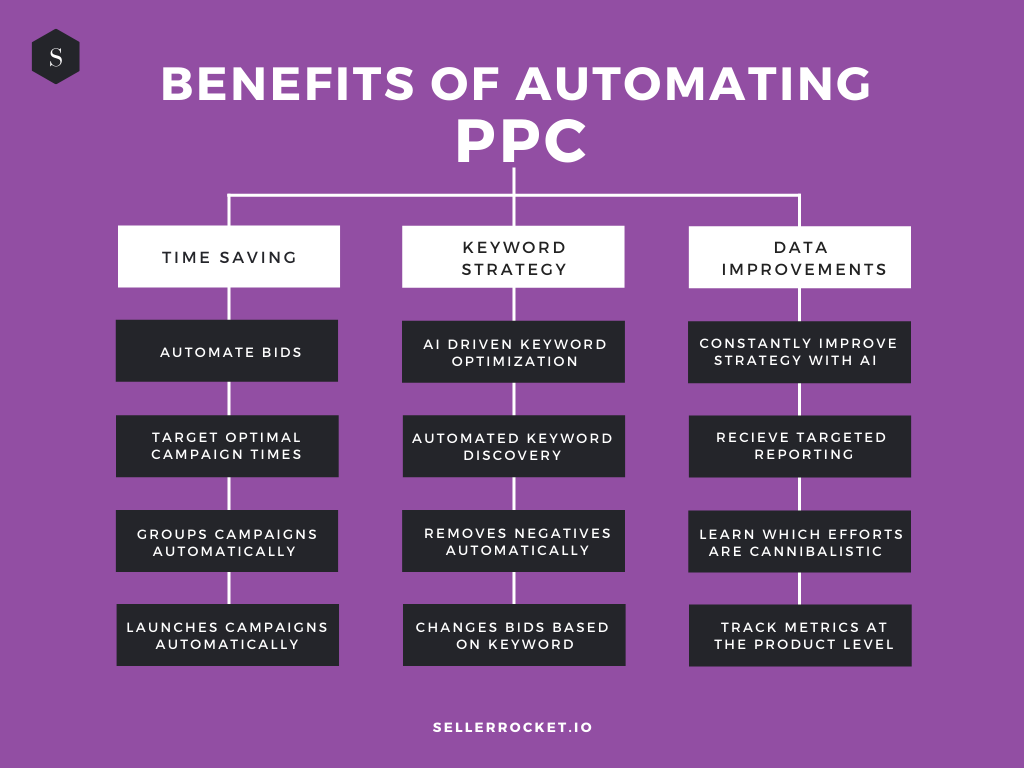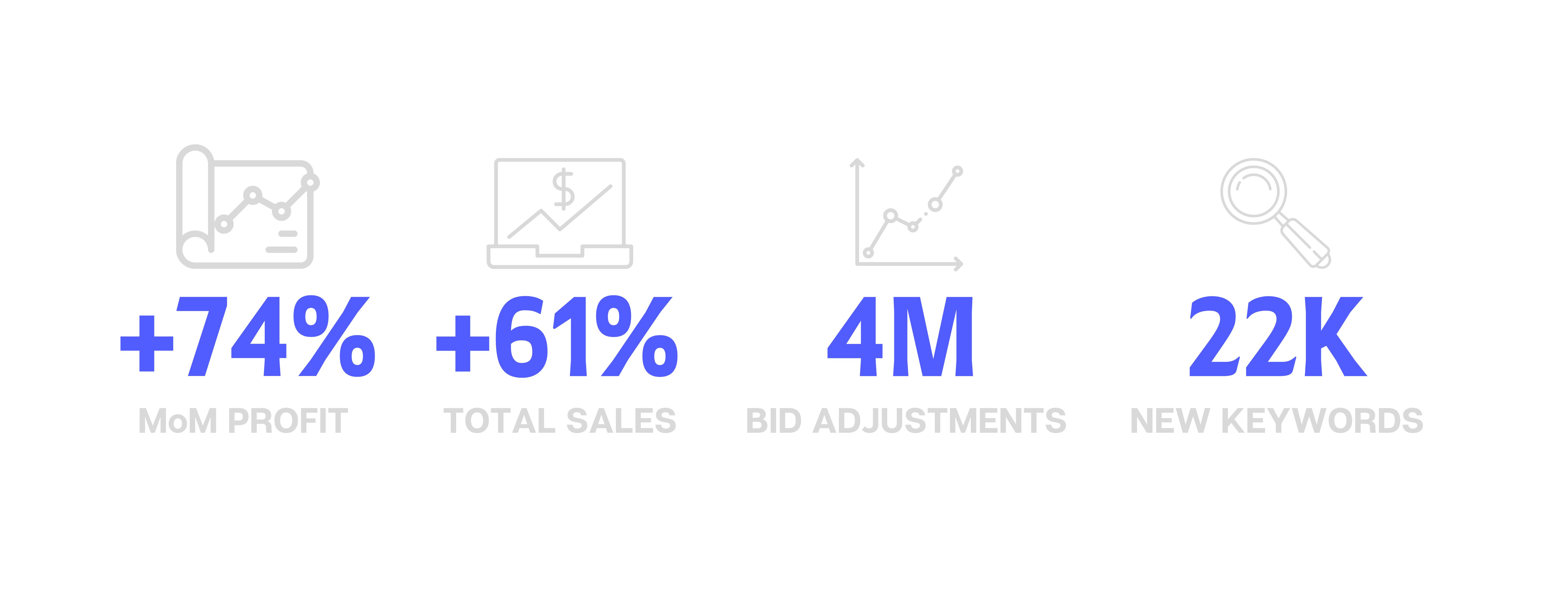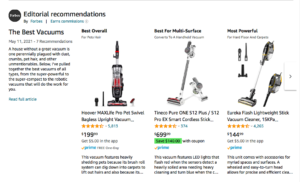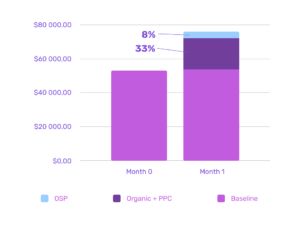Pay-per-click (PPC) advertising is the advertising style of sponsored ads on Amazon. These ads are complex, but most simply function by letting advertisers choose how much they would like to pay for a click on their ad, then providing the highest bids with the greatest likelihood of advertisement visibility in response to a customer’s search query.
PPC ads have become incredibly common on Amazon, with Amazon’s product pages now showing sponsored ads before organic products. The ads that are shown when you search are only a small percentage of the ads competing for that position, and each ad has an entire campaign behind it composed of different audience targets all chosen by those running the campaigns.
To be successful in PPC, there’s a list of things you need to stay on top of:
It’s a long list. And it requires a lot of attention and expertise to optimize it. Service providers have taken notice of the struggles that sellers are facing and have developed strategies to help sellers optimize their PPC campaigns. Two of the best strategies are to automate your PPC campaigns and to diversify your advertising efforts outside of sponsored ads.
Contents
Automated PPC differs from manual in that software will automatically alter your strategy for you. Doing so resolves multiple of the issues that manual PPC campaigns face, the first being time.

Automating PPC: save time, optimize keywords, and improve data tracking
Instead of conducting daily iterations of the six-point checklist and making subjective guesses as to what’s worth changing, an automated campaign iterates through on its own and makes corrections. This saves time with PPC education, daily PPC updating, and human error.
Human error ties into a different benefit as well – accuracy. Most changes made by sellers to their PPC campaigns aren’t their best option. PPC is complex and difficult to grasp, however automated PPC uses data-driven software that can fully optimize your campaigns. Softwares differ depending on which service is used, however, the best software uses AI-driven machine learning that will adjust strategy as it receives more data. AI-driven machine learning allows software to be given any set target margin and know how to adjust ad groups, campaigns, and keywords so that they’re fully optimized. This process is automatic and continual so sellers can be confident that their PPC is fully optimized at all times.

Results of PPC automation: 4M bid adjustments, 22K keywords
The above figure is from a Sellozo case study and demonstrates the difference between manual and automatic campaigns well. Over a few months, Sellozo’s software adjusted keywords 4 million times and found 22,000 new keywords. These numbers are nearly impossible to reach manually and would require a seller to spend nearly all of their time checking their campaigns. By using Sellozo’s software to continually update PPC campaigns, this seller was able to increase their sales by 61%.
PPC agencies are abundant and many offer unique benefits that help sellers differently. The best way to decide which to use is to look at the benefits of each company and determine if they align best with your strategy and capabilities. If your product category is competitive and you want to be competitive for keywords, it’s worth finding a company that has created unique keyword optimization tools that aren’t being used by competitors.
For example, Sellozo, a PPC platform utilizing AI-driven software, has an automated keyword discovery tool that will find optimal keywords and automatically use them in your campaigns. The tool additionally can find negative keywords and automatically disable them from campaigns. Both of these lower your ACoS.
Tools like this are great for meeting your goals and are usually just one piece of an entire suite of tools you’ll have access to once you choose a PPC platform. Alongside the keyword tool, for example, Sellozo offers expert advice, campaign management, AI-driven optimization software, and Amazon dayparting, which will run campaigns when user activity is high and stop them when shoppers aren’t converting. All of this comes at the same price and when used together improves ad revenue by 70%, according to Sellozo.
Before choosing your PPC platform, make sure to look at published improvement data and payment structures for multiple companies. Companies with high performance will be happy to share their data with you and often publish it directly on their site. Once you’re confident in a few companies, narrow them down by the unique tools they offer. The last deciding factor is their payment structure. Payment structure varies by company and it’s up to seller preference to determine which to use. Sellozo offers flat-free pricing, however, many advertising software charge a percentage of ad sales.
Sponsored ads are only one of three major types of advertising on Amazon – sponsored ads, Amazon editorial recommendations, and video ads. To give yourself an edge on competition and maximize revenue, it’s best to utilize all three.
Amazon Editorial Recommendations are different than PPC ads in that they’re SEO based and they are recommended by a member of the Amazon Onsite Associates Program. The program is composed of roughly 200 publishers such as Wirecutter, Forbes, and CNN Underscored whom Amazon has invited to post product recommendations to their site.

The Best Vacuums: An Amazon Editorial Recommendation by Forbes
Each recommendation sits within the top third of the product page and takes up a greater amount of page space than other advertising types. Editorial recommendations are unique in that, though sellers can pay for inclusion, they appear as external recommendations. This greatly increases product trust alongside the other benefits of maximizing page visibility and increasing conversions.

Editorial revenue generation: 8% directly attributable to the article, 33% to improved PPC
The bulk of money generated from Amazon Editorial Recommendations comes from improvements in already implemented PPC and SEO efforts. After an Editorial is posted, both SEO and PPC begin to improve; over time, this greatly increases revenue. The graph above is from a Seller Rocket case study which found that 33% of the total 41% lift in sales in the first month was due to the improvement in PPC efficiencies that occurred as a result of the Editorial’s post.
Amazon Editorial Recommendations can be accessed through our team at Seller Rocket. You can fill out this form here and we’ll be happy to meet with you to discuss further. Once your ASINs have been chosen and your keywords have been sent, it takes 2-3 weeks for a publisher to write the article and another 2-3 weeks for Amazon to AB test against their current Editorial Recommendations. To learn more information about the results of Amazon Editorial Recommendations, check out our blog.
Video advertising is a form of PPC advertising that allows sellers to post product videos directly to Amazon. It’s a great way to improve page visibility and product trust and capture the attention of the user. Video advertising also has the unique benefit of showing products in action – allowing users to see exactly what differentiates that product from its competitors in a few short seconds.
When video ads are utilized alongside sponsored ads, there’s an average 320% increase in daily sessions and 150% in sales compared to PPC alone, according to Amazon Advertising. When utilized with PPC and Editorials, this lift is even greater.
To learn more about creating an Amazon video advertisement, visit this page.
The best thing you can do for your products is to maximize your page visibility by concurrently using automated PPC, Amazon Editorial Recommendations, and video advertisements. Editorials and video advertisements have proven to improve PPC conversions on their own, however will have a greater effect when used together.
Additionally, the more content you have on the front page, the more likely a user is to notice your product – especially if each type of content is offering something new for your product like an external recommendation or a video on its functionality. To ensure front-page visibility is maximized, it’s best to automate PPC campaigns so that your product has the highest likelihood of occupying a front-page position, pay for Editorial Recommendation access, and create a video advertisement to use in your PPC efforts.
Though these services may seem like a large financial investment, it’s important to remember that all of them have proven results that will boost you above your competitors and increase your profits. Amazon has become a pay-to-play platform, and if you want to compete, you’ll have to follow. What’s most important is to invest your money where it counts and ensure the services you’re using drive results.

Maya Harper is the Seller Rocket Content Marketing Lead. Her focus is on developing meaningful partnerships and content for the Ecommerce ecosystem. You can contact her by emailing her at maya@sellerrocket.io or reaching out to her via LinkedIn.
© 2025 SellerRocket TM . All Rights Reserved.
Get our latest updates directly to your inbox.
Only the best in eCommerce and affiliate news, tips and tricks.
